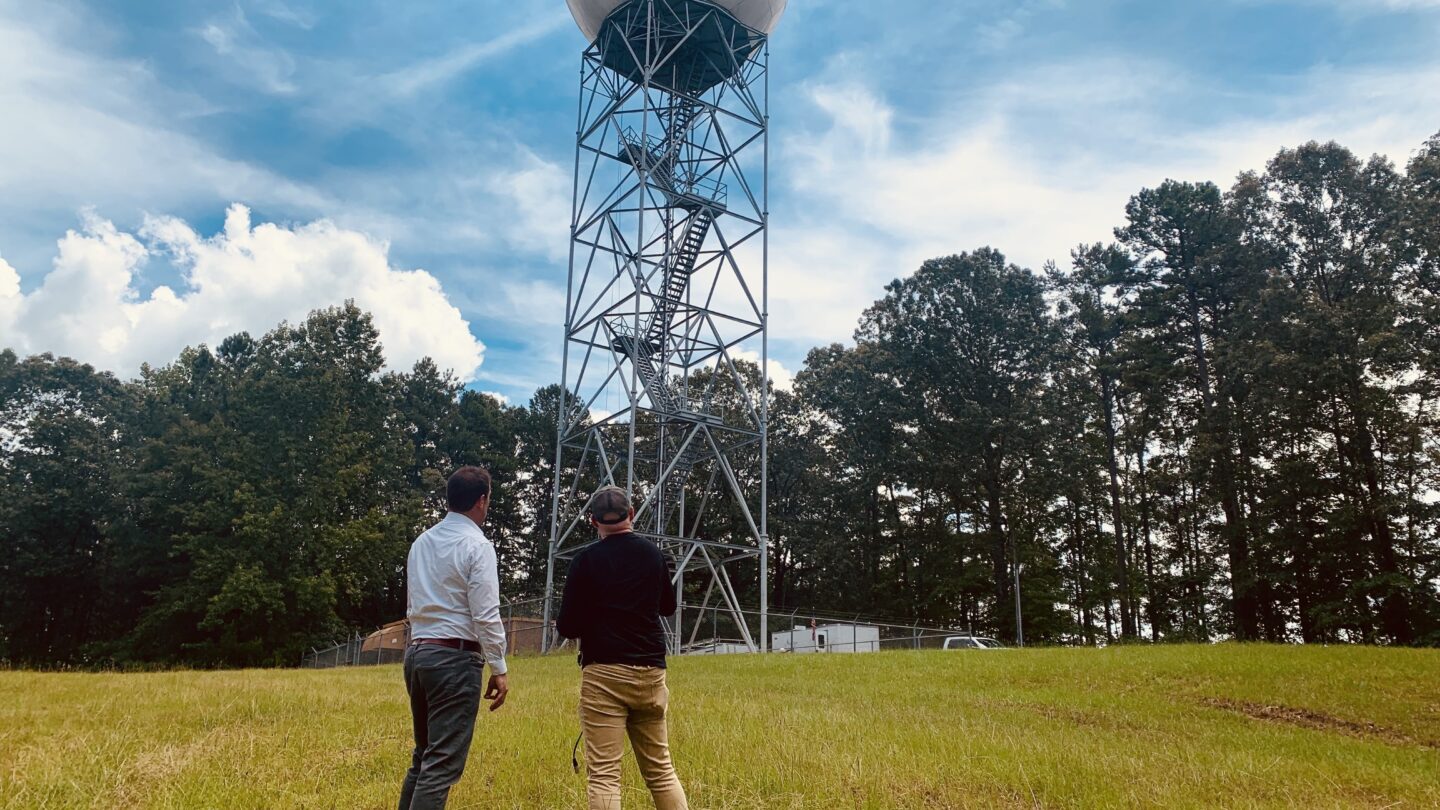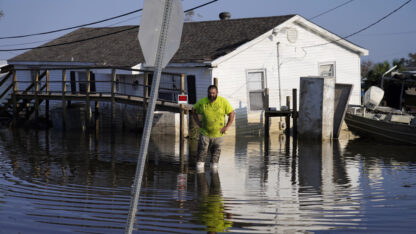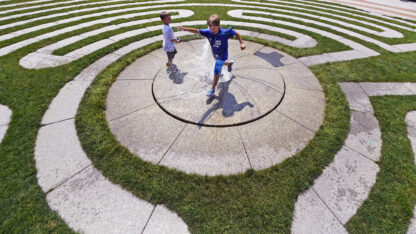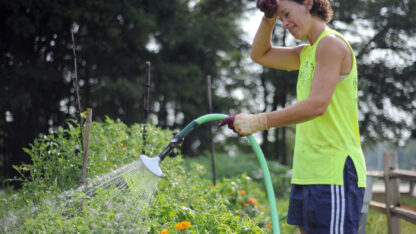A critical weather radar system — which forecasters use to understand the severity and scope of threatening weather for the Atlanta region — is back up and running in Peachtree City after a nearly 2-week outage.
The WSR-88D radar tower is around the corner from Peachtree City’s Falcon Field airport. Down a dirt road running parallel to the railroad tracks and up a grassy incline, you’ll find what looks like a massive volleyball plopped on top of zig-zagging steel scaffolding.
For about the past three decades, the radar inside has spun almost non-stop. Its job is to relay data to Atlanta’s National Weather Service office nearby about high-impact, hazardous weather. That includes everything from severe thunderstorms to tornadoes to snow and everything in-between.
“All of the stuff we see materialize with all those different hazards comes from what we see on the radar,” said Dave Nadler, warning coordination meteorologist with the NWS in Peachtree City.
Nadler said the eight-year, $135-million dollar initiative looks to keep the nation’s weather radars operational for another 20-plus years. So far, the robust system has withstood everything Atlanta’s weather has thrown at it, but it’s not infallible. In 2017, 160 mph winds from Hurricane Maria obliterated one of Puerto Rico’s radar domes as the storm crossed the island.









